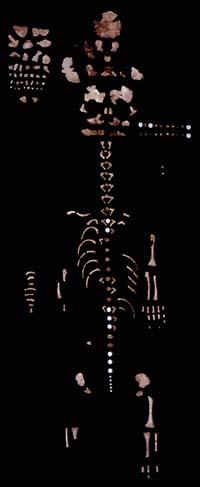The man of Neanderthal, distant ancestor?

The debate comes from a long time ago: did the man of Neanderthal and the modern man of Cro-Magnon cross? Most say no, but in recent days there has been a flood of news arguing that it was a crossing.
From an archaeological point of view, for example, some archaeologists from the University of Washington have studied bones that were found in Romania more than 50 years ago, and claim that they belong to a hybrid between men of Neanderthal and Cro-Magnon.
This is not the first time they claim that a particular skeleton belongs to a hybrid between the two species. Some skeletons of deposits such as Romania, Czech Republic or Portugal are a sign of bone hybridization.
However, genetics have the last word. Until now, genetics have not given hybridization tests. The two species, of course, would be related, but if it were a crossing, there would be traces of hybridization in the current human genome.
In recent days there have been news of interest that can change this vision. On the one hand, a group of geneticists from the University of Chicago has published that the microcephalin gene can be a trace of the Neanderthal man. The most frequent variant of this gene, which represents 75% of the human population, was introduced into the human genome about 37,000 years ago, coinciding with the coincidence between the man of Neanderthal and that of Cro-Magnon.

On the other hand, new methodologies have been developed for the study of bone DNA of Neanderthal Man. Thanks to them the DNA of the nucleus is being studied. So far, mitochondrial DNA has been used for the study of ancient genes, much more abundant than that of the nucleus. But it provides less information (mitochondrial DNA has few genes). Therefore, the study of nucleus DNA is a spectacular advance.
Thanks to these new techniques, two teams analyze the DNA of the nucleus of the same bone, discovered in a cave in Croatia. And although they have still sequenced a very small part of the genome, one group claims to have found traces of hybridization between the man of Neanderthal and that of Cro-Magnon. This group is led by researcher Svante Pääbo. And keep in mind that Päääbo has been contrary to the hypothesis of hybridization. Now it seems that the data has made him change his mind.
However, these data have not been satisfied by all the experts and the group of those who say that there was no hybridization is greater. But what is going to happen as the DNA research of the Neanderthal man's core progresses, and as more genetic data is incorporated.





